To celebrate the October 13th release of my forthcoming debut novel, King of Shards, I will be featuring one new blog entry a day about a different Judaic myth for 36 days. Today’s entry is on the Great Ziz.
Day 4: The Great Ziz
The Ziz is a bird as large as Leviathan. Just as Leviathan is the king of the fishes, so too is the Ziz the king over all the birds. Her ankles rest on the earth, while her head reaches into the sky. Some say Ziz is so tall her head ascends all the way to the Throne of Glory, where she delights the one God with her birdsong. If the Ziz were to spread her wings, a darkness would spread over the whole earth from her shadow.
One time a boat, traveling in deep waters, came across the great Ziz. The crew saw that only the ankles of the great bird were under water and said, “Look, the water is shallow here! Let’s swim and cool our sweltering bodies!” But just as they were about to jump in, a voice boomed down from heaven. “Swim not here! Seven years ago, a carpenter dropped his axe at this very spot. To this day, it has not reached the bottom!” Then the travelers knew the bird, which they thought had been small, was none other than the great Ziz, which by a trick of the eye had seemed the size of a typical bird.
When the Ziz unfurls her wings, she protects the earth against the storms raging in the south. Without her protection, the winds would pummel and destroy the lands of earth. The Ziz is normally very careful and protective of her eggs. But once she noticed that one was diseased and rotten. She haphazardly knocked it from her lofty nest, where it fell to earth. It landed in a forest, where it crushed three hundred cedar trees and flooded sixty cities. Seeing the destruction, the Ziz became more cautious of her actions, and none of her eggs have fallen since.
The Ziz is a fabulous singer, and it is said that even God delights in her melody. Because of her lofty perch, she is known as the “seer.” Her offspring do not hatch from their eggshells at the behest of their mother bird, but spring free of their own wills to fly about the world.
At the end of days, when the Messiah comes, all the righteous will feast upon the flesh of the Ziz — just as they will eat the flesh of Behemoth and Leviathan — in a great banquet as a reward for abstaining from the unclean birds. The Ziz will taste a little like this (zeh) and a little like that (zeh), and this is why we call her Ziz.
The Myth’s Origins
Three gigantic creatures appear in Jewish mythology. We often hear of Leviathan, who rules the oceans and was made famous in the tale of Jonah. We hear less often of Behemoth, first mentioned in the Book of Job, a huge land creature. But the flying Ziz is seldom mentioned, and hasn’t had much success sticking in popular culture, the poor creature, though a few children’s books have been written about her. The Ziz is mentioned twice in scripture. In Psalms 50:11, it says, “I know all the birds of the mountains and Zīz śāday is mine.” And in Psalms 80:13-14 , it says, “The boar from the forest ravages it, and Zīz śāday feeds on it.”
The story of the great bird is first elaborated upon in the Talmud, tract Baba Bathra 73b, which recounts the story of the fallen axe. Rabbah bar Bar Hannah, a Talmudic sage, reported many strange sightings in his journeys across land and sea. These sighting were often interpreted allegorically by future sages. The waters that appear shallow but turn out to be very deep is a metaphor for the Torah, the rabbis said. The Torah may only appear “ankle-deep” at first blush, but it is in fact unfathomably deep. The Ziz’s head that scrapes the clouds refers to the esoteric aspects of the Torah, the Kaballah. The voice, warning those frivolous seafarers not to swim in the shallow-looking waters is interpreted as an allegory warning those not versed in Torah from delving into its innermost secrets of the Kabbalah. The falling axe is seen as the Messiah himself, since he is known as the “axe of God.” The axe falls for seven years, which was interpreted as meaning 7,000 years, the time from Creation until the Messiah comes. The axe itself is the Messiah’s probing into the deepest secrets of the Torah, which are still ongoing. In the Messianic age the Messiah will reveal these secrets to humankind.
In some tales, the Ziz serves as a messenger of God and fate. King Solomon didn’t want his daughter to marry a poor man, which had been prophesied, so Solomon hid his daughter in a high tower. But the Ziz flew in a young poor man, and the couple lived together secretly, and eventually married. In another tale, the Ziz drops off a young Torah scholar into the hands of a Spanish princess, where they fall in love, only to snatch him away again after a while. Eventually, he finds his way back to her, but only after great effort.
Some Thoughts on the Myth
Fantastical creatures of mythology always appeal to me. Like unicorns, dragons, sprites and dryads, the creatures of myth reveal another era, when the world was vast and mostly unknown, and magic lingered around the bough of every tree. We hear often of certain biblical creatures like Leviathan and Behemoth, but seldom do we hear of creatures like the Ziz. Perhaps the popular creatures represent some aspect of the human psyche, projected out upon the world. Unicorns represent uniqueness and purity. Dragons, rage and greed. Sprites and dryads our impish nature and lost childhoods. If so, then what does the Ziz symbolize? The ancient sages interpreted Rabbah bar Bar Hannah’s story metaphorically, as if he were speaking of a person’s investigation of the more esoteric secrets of the Torah. If so, it’s understandable why the creature hasn’t attained mass public consciousness: it wasn’t meant to. The Zohar itself, the chief mystical text of Kabbalah, is written in metaphor and subtext. Those ready to plunge into its study would be well versed in the notion of allegory. Coming upon the mention of the Ziz might serve as a warning to those metaphorically minded: “Beware! These waters are deeper than they look!”
But the Ziz is not only used as a warning. She shows up as a literal deus ex machina to alter the fate of people’s lives, as with Solomon’s daughter and the young man who married the Spanish princess. And with her huge wings, she protects the earth from tempests raging in the south. So she is both a protector and a symbol of fate.
Little mention is given to what the Ziz looks like, nor how large her offspring might be. Some suggest she was griffin-like. Others depict the Ziz as a bizarre cross between a peacock and a chicken. Some have depicted her as a phoenix, with fiery wings. It’s interesting to note its similarity to other large birds of myth, like the mythical giant Roc.
While the Great Ziz has not found its place in popular culture like other mythical creatures, I still find mention of such an enormous bird in the Talmud immensely fascinating. Like the boatmen, I am finding the waters of myth in Judaism much deeper than I’d first imagined.
Tomorrow’s myth: The Sabbath Bride







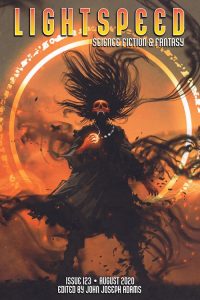
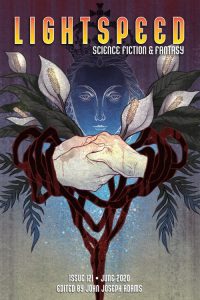



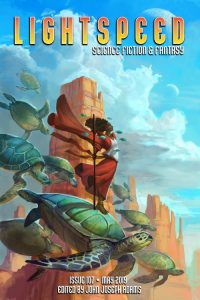

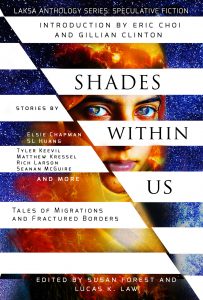



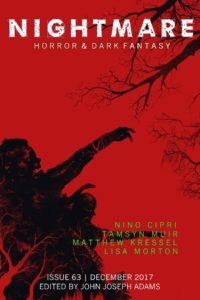
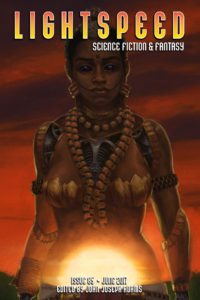





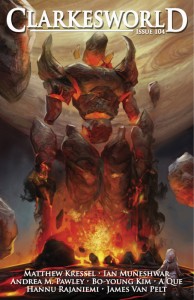

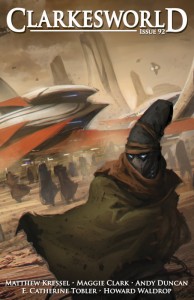

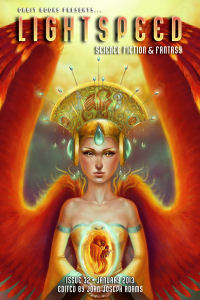




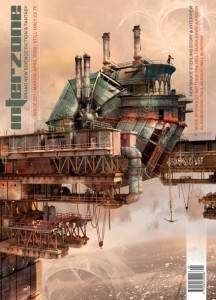
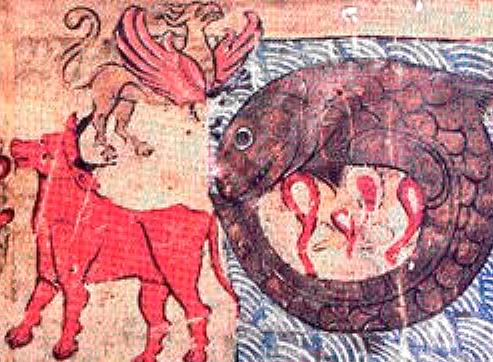

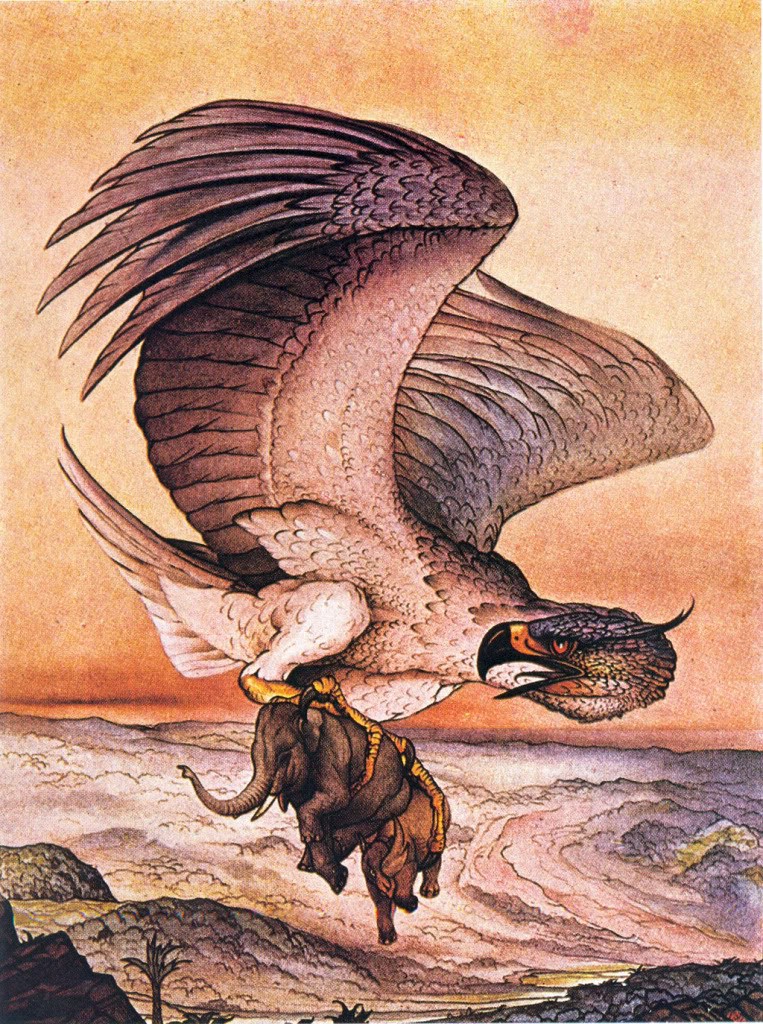
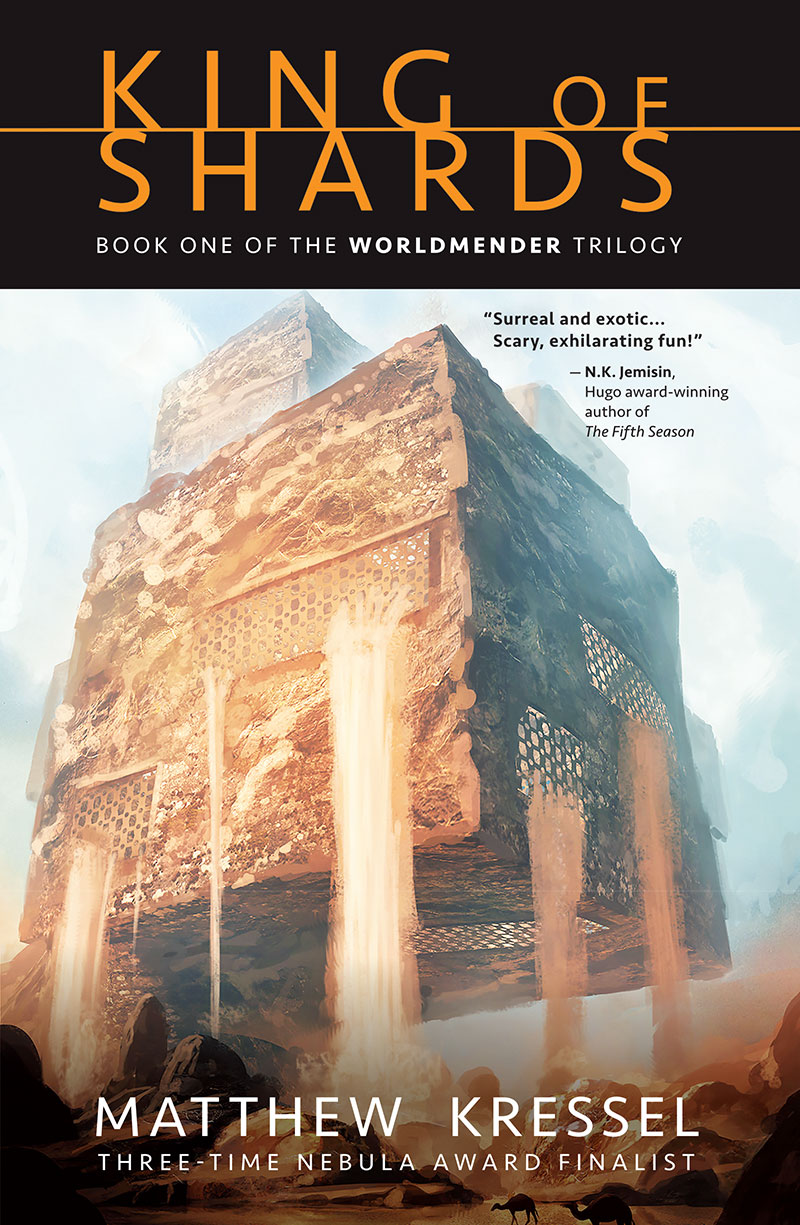
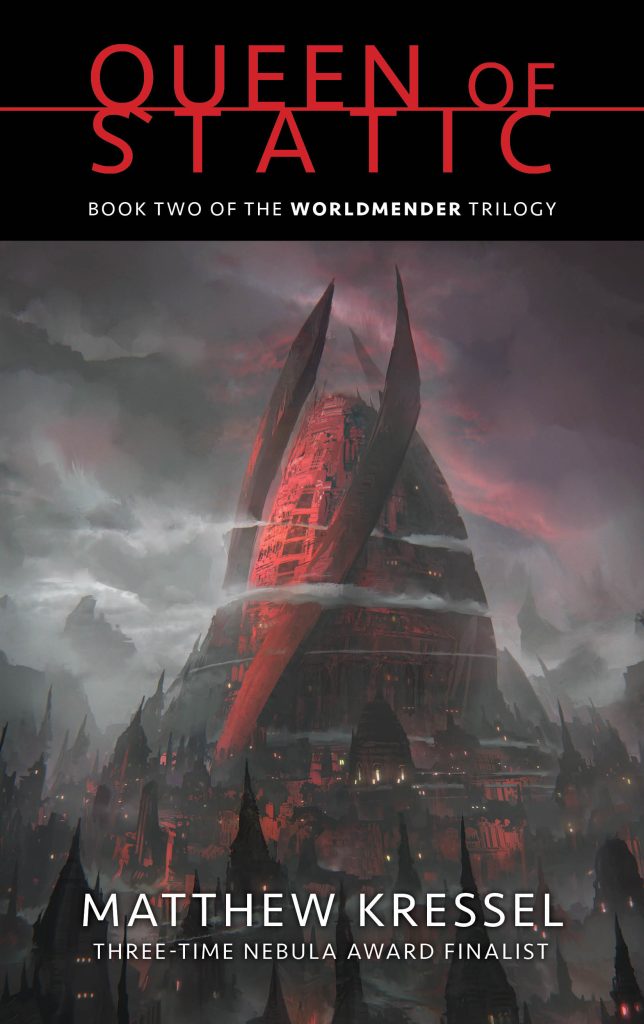

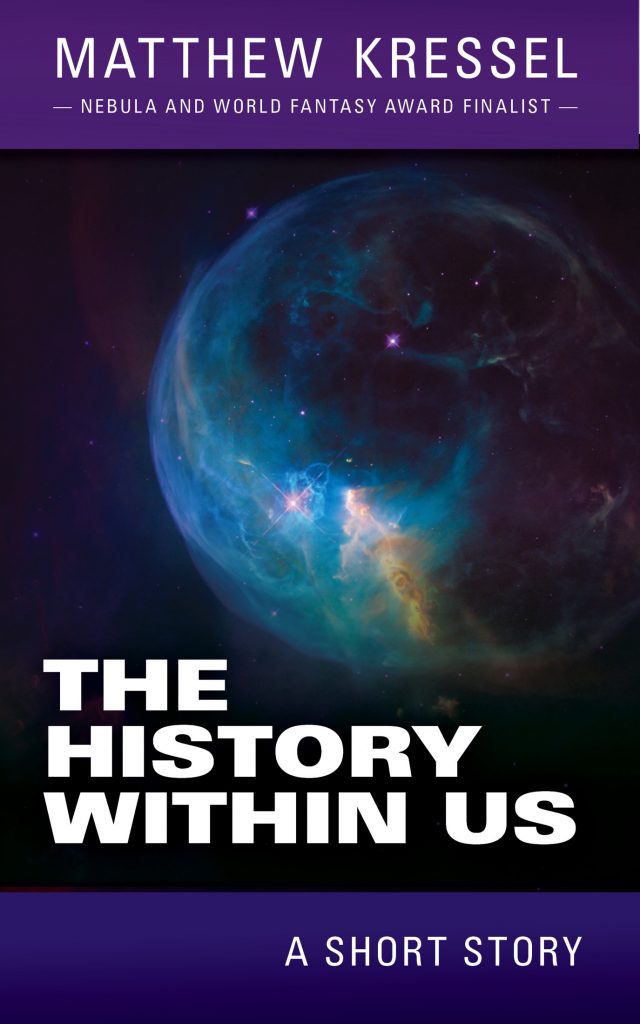
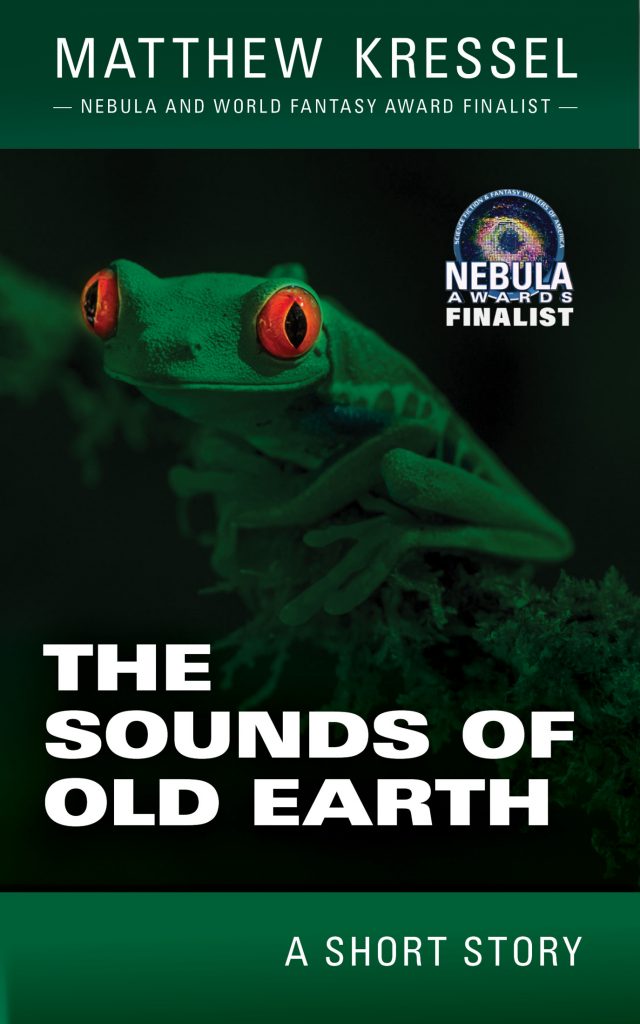
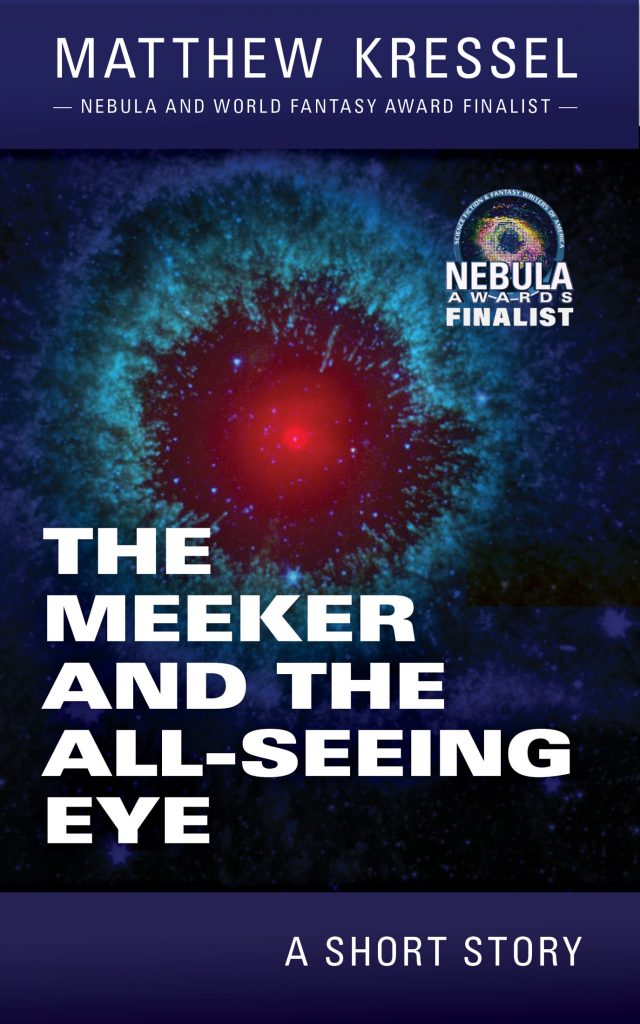

2 Pingbacks